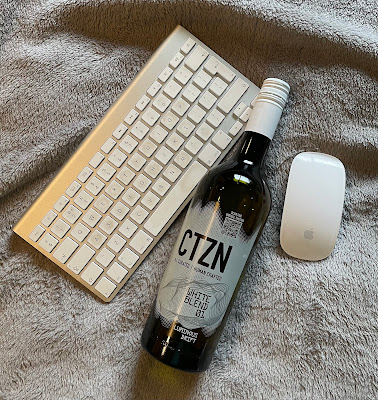Here’s something I learned last week. Artificial Intelligence (AI) is being used to produce wine.
Really? What about the vintner? I always thought that their practised, artful skill is what wine making was all about it. Technology and machinery in the vineyard by all means but in the alchemy of turning grape to wine surely not.
There’s a first time for everything and so it was back to school for a lesson on and taste of AI-curated wine. School in this case was a wine appreciation class where a dozen of us meet each week in a local social club. Our tutor - we’ve come to look upon him as a benefactor - selects several wines he thinks we’ll like and we spend a couple of hours tasting our way through them and comparing notes and picking favourites. In a recent class many of us also sampled for the first time “orange” wine and that might be the subject of a future post.
But back to that AI curation.
CTZN - Luminous Drift is a wine blend from South Eastern Australia, apparently bottled in London. That probably means it is a “tanker” wine, imported in large containers and bottled on arrival to reduce transportation costs. AI has no doubt been deployed there to maximise efficiencies.
At 11% volume, Luminous Drift is subject to a lower duty rate than other more powerful wines. This makes it more marketable as rates for all alcohol products sold in the UK are now linked to strength. That lower volume is attractive to many people , like me, who favour lighter styles for health reasons.
Do you know what? The wine was very well-received by our group. Fresh, bright and elegant with a nice acidity that would pair well with some pasta dishes or goat’s cheese. A summer-sipper many of us felt. And most would gladly have it again.
I wonder if producing this class pleasing result is how AI played its part. It seems that curation relies on algorithms harvesting data; pressing our preferences for various grapes and styles and fermenting our likes and dislikes to finally bottle something that appeals to the widest possible number of people. The outworking of those data points results in a wine blend of 52% Pinot Grigio, 23% Sauvignon Blanc and 16% Riesling. Of course, there is a Human dimension. That final 9% is the Vintner’s craft working to achieve a balanced finish.
Serious students do homework and so a trip to the off-sales was prescribed.
Back home with the bottle I noticed a QR code on the label. Now that was clever. Scanning the code with my phone camera a robot character called SOM - short for sommelier - appeared on screen. Som’s task is to guide the purchaser through a virtual wine tasting. It would be great to screen share that with a group of friends while also sharing the contents of a bottle. CTZN also offers a couple of reds in its hard drive, so more than enough for a virtual home tasting. Maybe not for our class though.
Som was a fun character but not as yet a replacement for our wine tutor, the benefactor who each week goes shopping for wines he thinks will delight us.
As well as wine knowledge, his human algorithms factor in history, geography, experience of and anecdotes from visiting the wine lands.
Emotional and actual intelligence. Worth bottling.
PS: Please be a good CTZN and drink responsibly
